If you’re like me, you’re always looking for fresh ways to make science and math more exciting for your students. That’s where STEM activities for middle school come in.
In this guide, you’ll find more than 20 fun, hands-on projects that are easy to set up and use materials you already have.
We’ll walk through quick challenges, science experiments, engineering designs, tech-based ideas, and even cross-curricular projects that tie in art and math.
You’ll also get free printables, planning tips, and ways to connect each activity back to learning goals. My goal is simple: to help you bring STEM to life in a way that’s practical, memorable, and fun for your classroom.
Importance of STEM Activities in Middle School
Middle school is a key time for building curiosity and confidence. Kids are old enough to take on bigger challenges, but still open to trying new things. STEM activities provide a safe space for them to learn, experiment, and ask questions.
Hands-on projects also make abstract ideas easier to understand. Instead of just reading about force or energy, students get to see it in action with rockets, bridges, or circuits. This helps learning stick and makes science and math feel more real.
STEM also builds important life skills. Working in groups teaches teamwork and communication. Trial and error show that failure isn’t the end, but rather a part of the process.
Creative projects offer children an opportunity to problem-solve in a way that feels both enjoyable and rewarding.
In short, STEM activities help middle schoolers connect what they learn in class to the world around them. They prepare students not only for future studies, but also for real-life problem-solving.
Stem Activities for Middle School
Middle school is the perfect time to spark curiosity and creativity. STEM activities provide students with the opportunity to build, test, and learn, making science and math feel more tangible and relevant.
The best part? Many of these projects utilize simple materials and can be completed with minimal preparation.
Quick & Easy STEM Challenges
These are the kinds of projects you can set up fast with things you probably already have. They’re fun, hands-on, and get kids thinking without a lot of prep. They are listed below:
1. Egg Drop Challenge
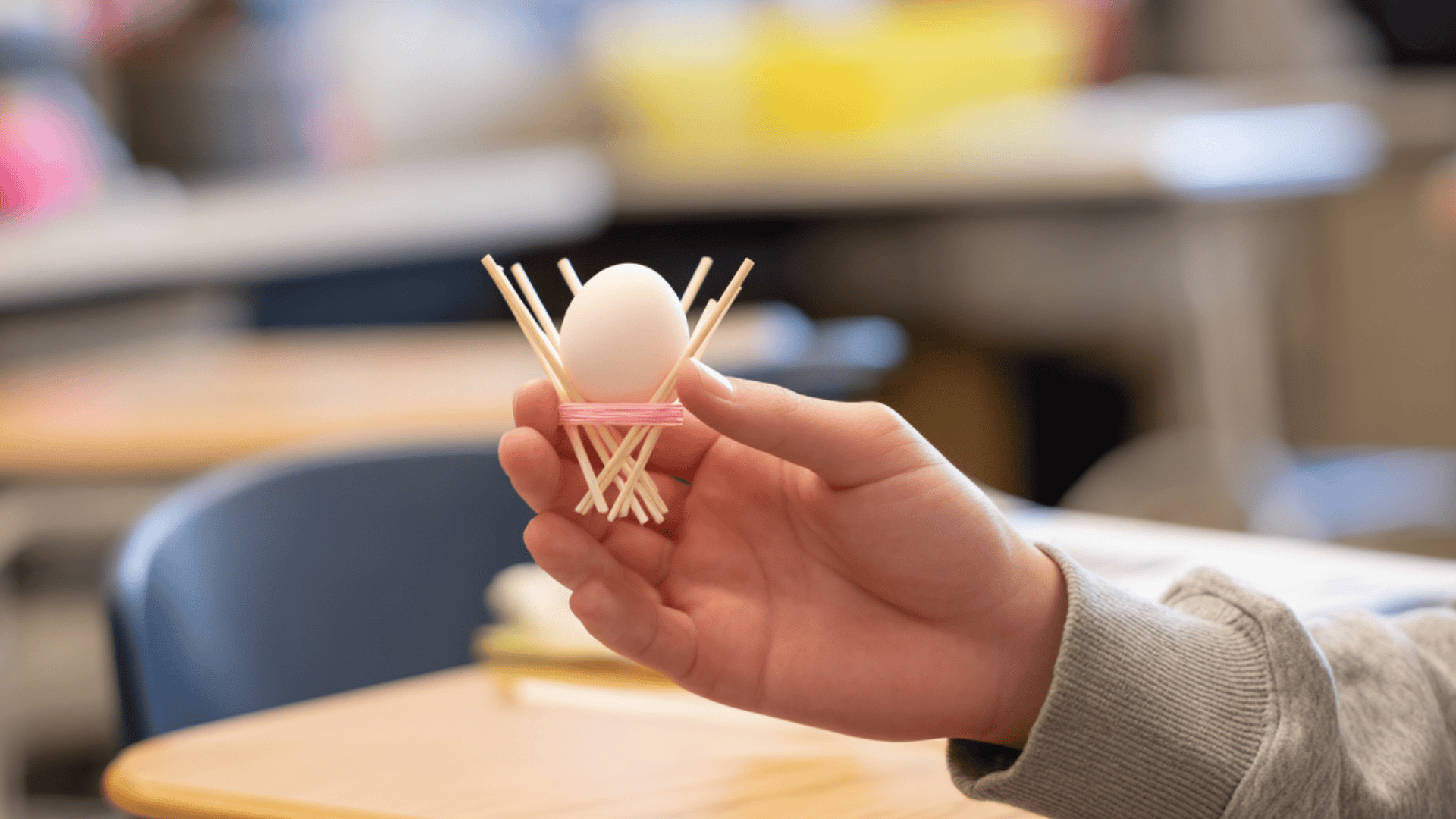
The goal is simple: keep an egg from breaking when it’s dropped. Kids get to design their own “safety pod” using everyday items. It’s messy, creative, and a great way to see how trial and error leads to better designs.
- Time: 30–40 minutes
- Materials: Eggs, tape, straws, paper, cups, rubber bands
- Difficulty: Medium
2. Bottle Rockets
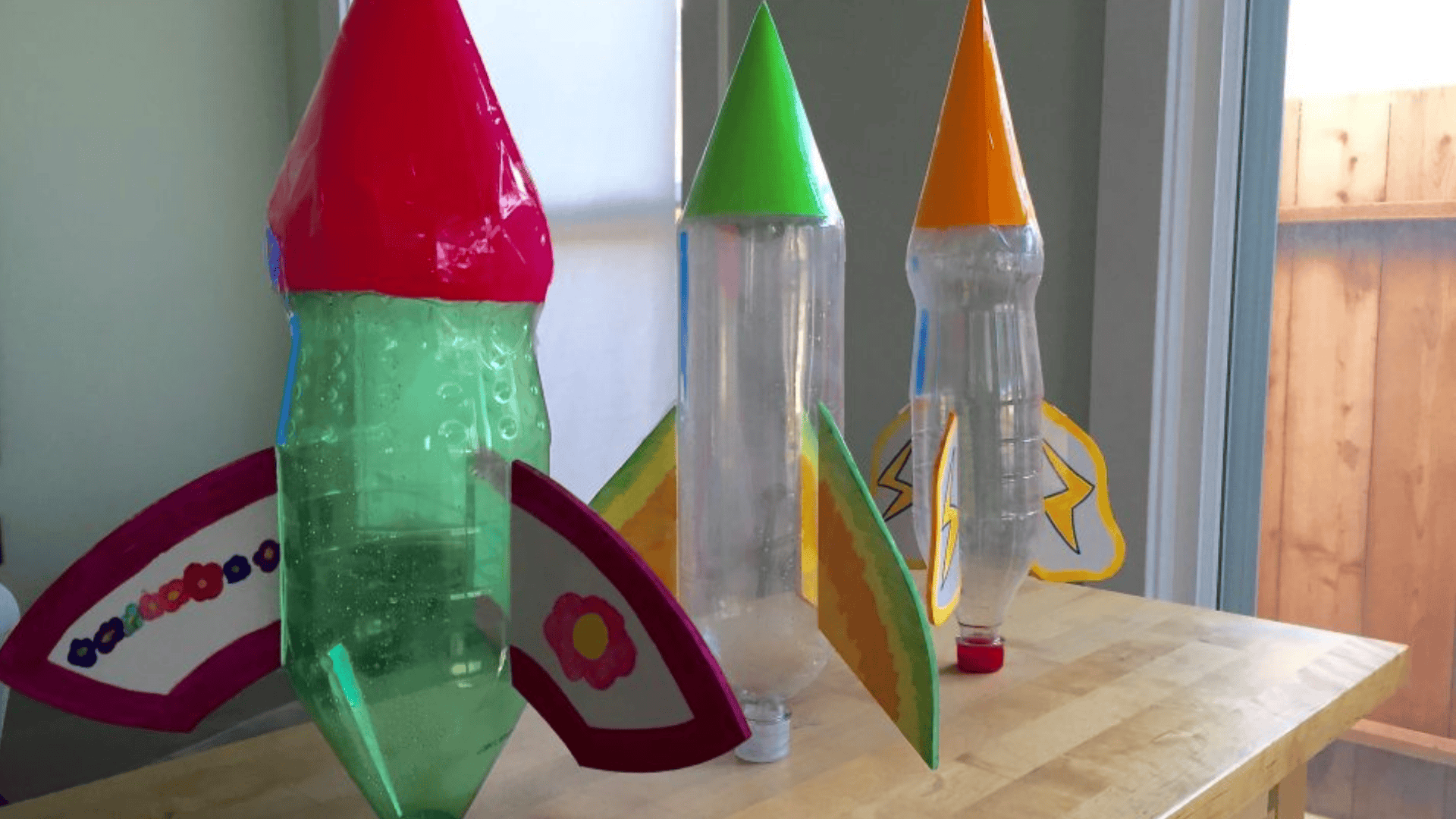
This one is always a hit. Fill a plastic bottle with some water, pump in air, and let it fly. Students quickly see how air pressure and thrust work together. It’s a fun way to sneak in lessons about motion and aerodynamics.
- Time: 20–30 minutes
- Materials: Plastic bottles, water, cork, pump or straw launcher
- Difficulty: Medium
3. Marshmallow Catapults
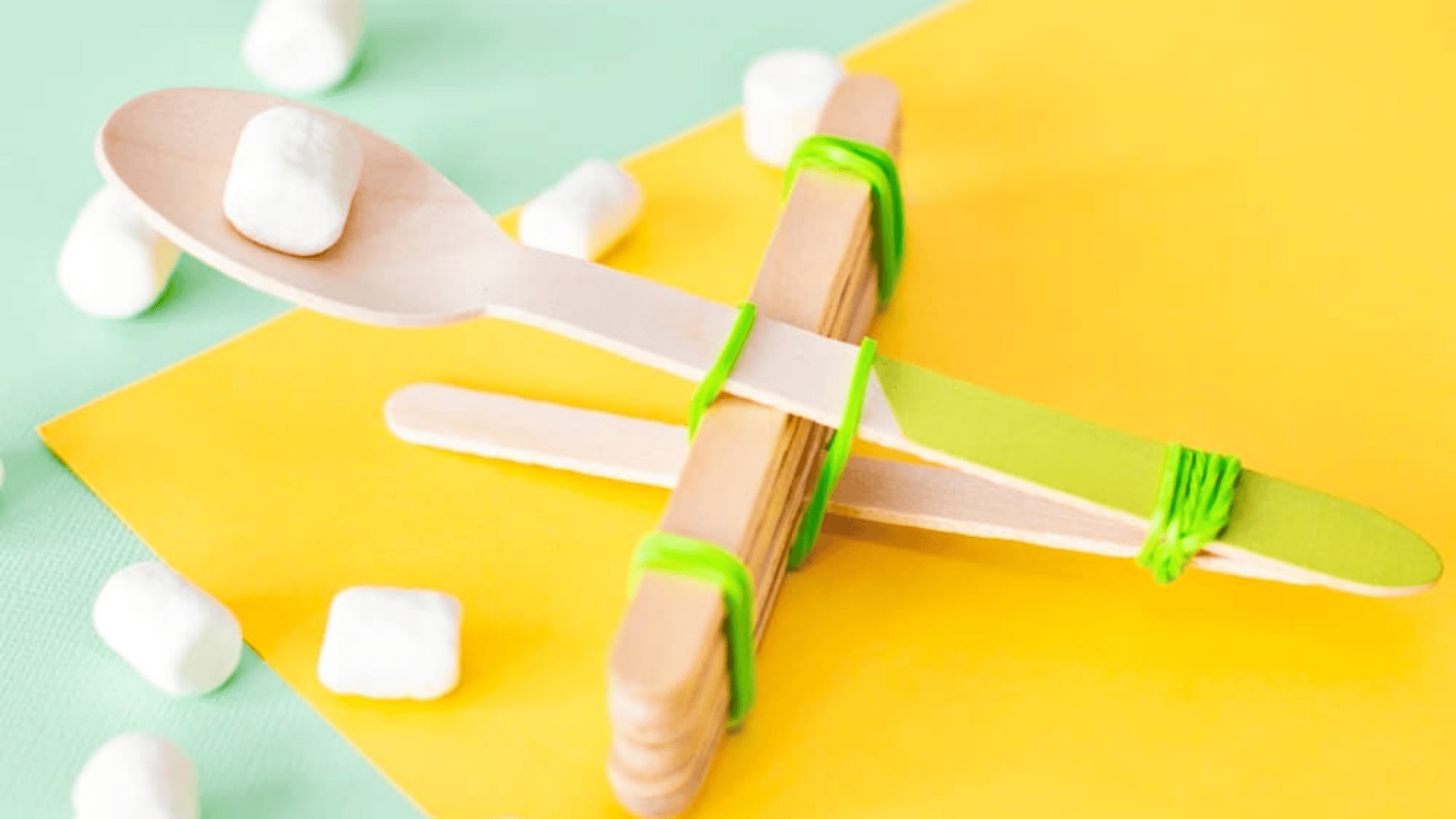
With a few popsicle sticks and rubber bands, kids can build a little catapult that launches marshmallows. They’ll test angles, power, and distance while having plenty of laughs. It’s simple but teaches a lot about energy and motion.
- Time: 15–20 minutes
- Materials: Popsicle sticks, rubber bands, spoon, marshmallows
- Difficulty: Easy
4. Static Electricity Races
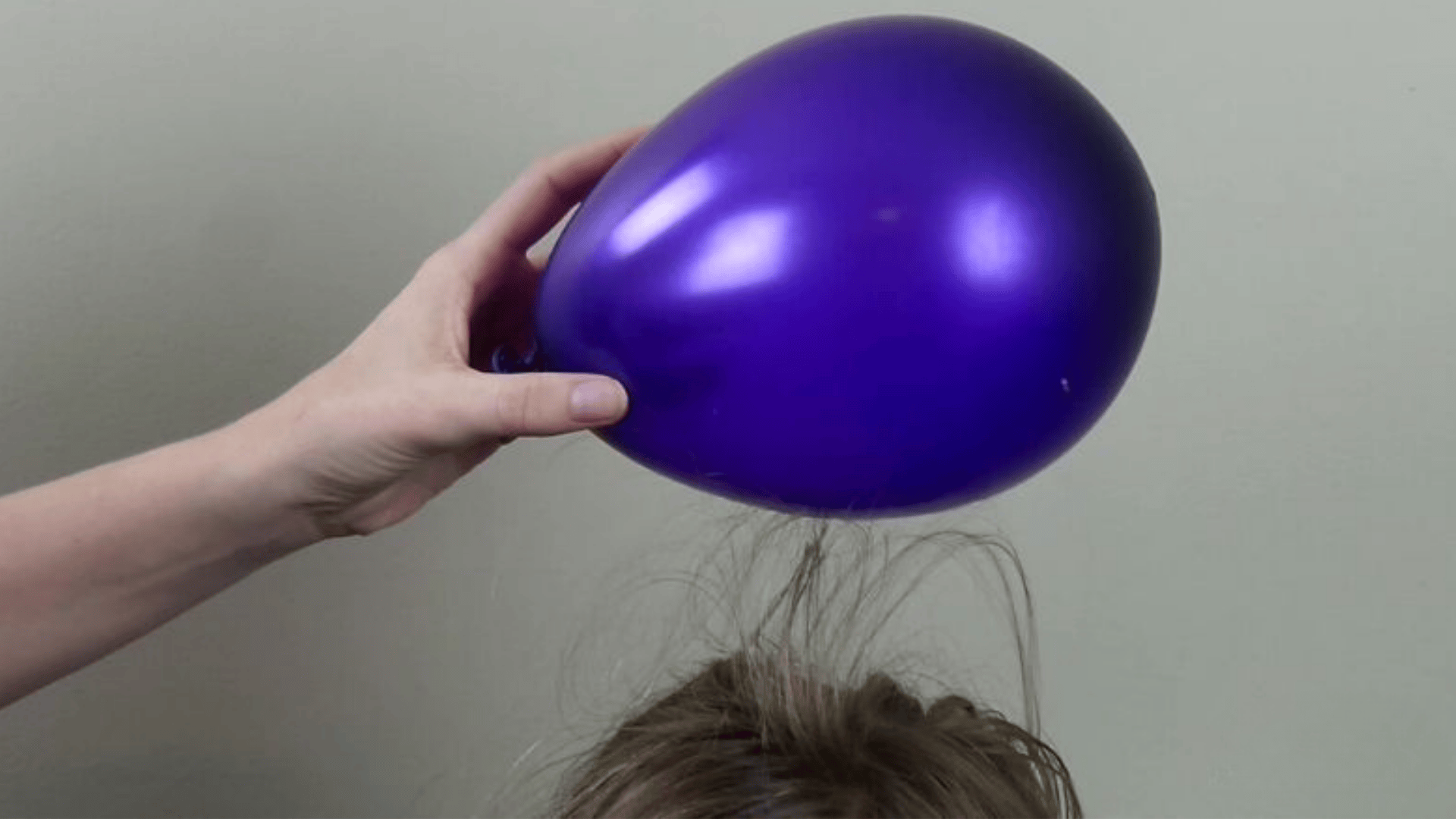
Blow up a balloon, rub it on your hair, and watch it move a soda can across the floor. Kids love how “invisible” forces make things happen. It’s quick, easy, and a neat way to show how static charges work.
- Time: 10–15 minutes
- Materials: Balloons, empty soda cans
- Difficulty: Easy
5. Paper Bridge & Straw Towers
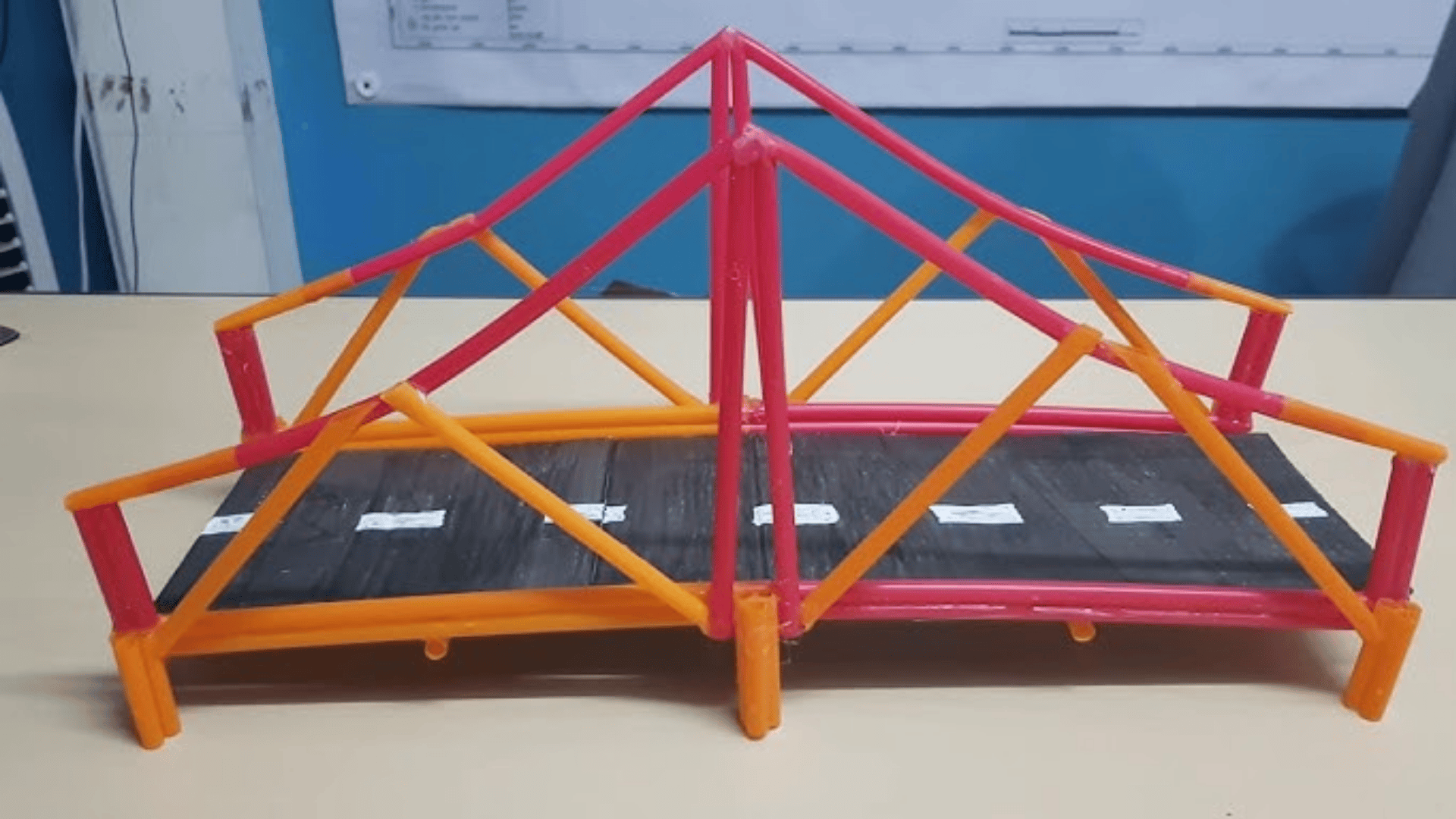
Hand kids some paper or straws and challenge them to build the strongest bridge or tallest tower. They’ll figure out fast that balance and design matter. It’s a low-cost activity that sparks creativity and teamwork.
- Time: 25–35 minutes
- Materials: Paper, tape, straws, coins, or small weights
- Difficulty: Medium
Science Experiments with a Twist
These projects bring science to life in a fun way. They use everyday items but teach big lessons about energy, chemistry, and biology.
6. Solar Ovens
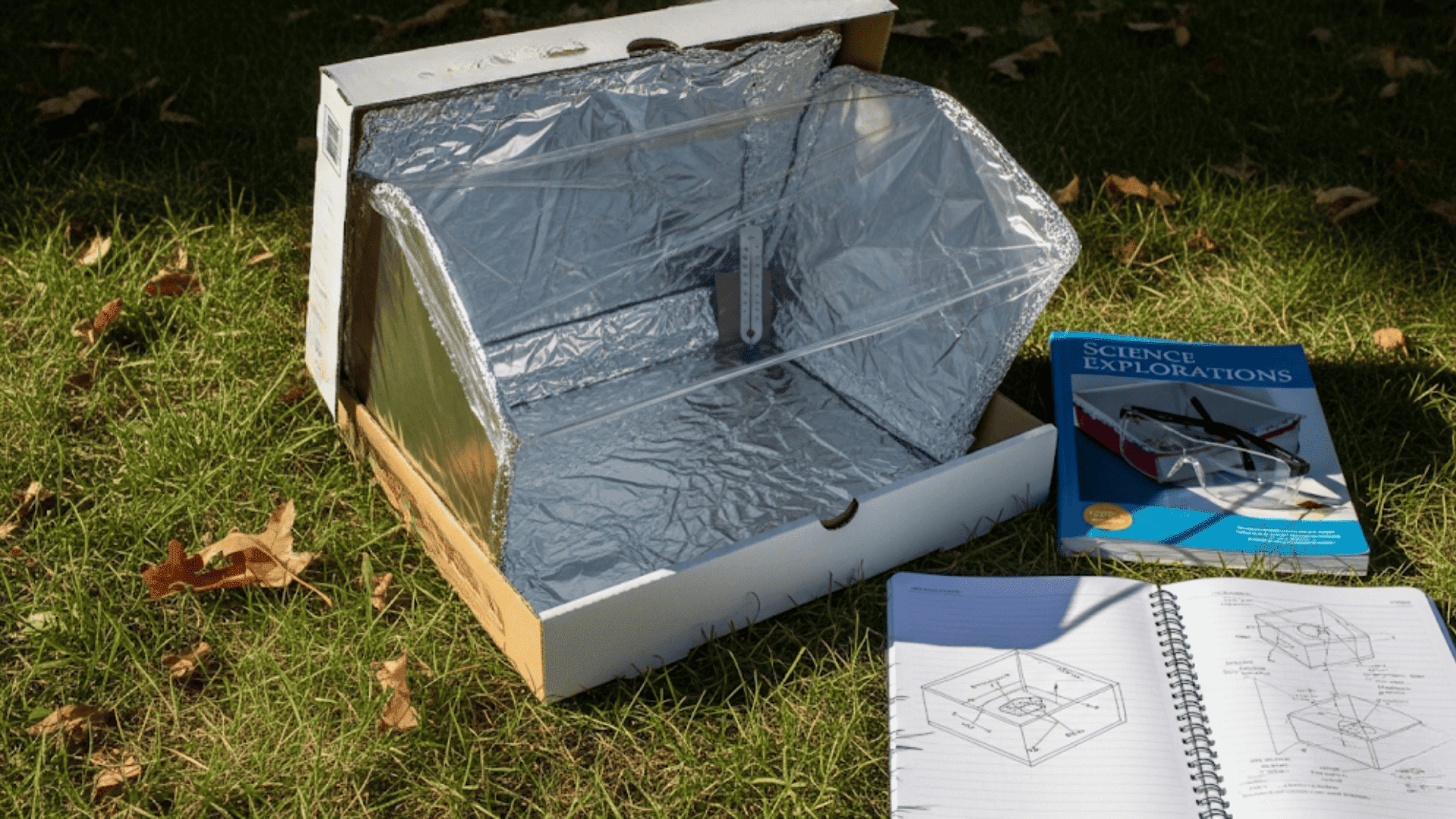
Turn a simple pizza box into a working oven. Kids line it with foil, add plastic wrap, and use sunlight to heat food. It’s a fun way to learn how solar energy works and how we can use it in real life.
- Time: 30–45 minutes (plus cooking time)
- Materials: Pizza box, aluminum foil, plastic wrap, black paper, tape
- Difficulty: Medium
7. DIY Water Filtration
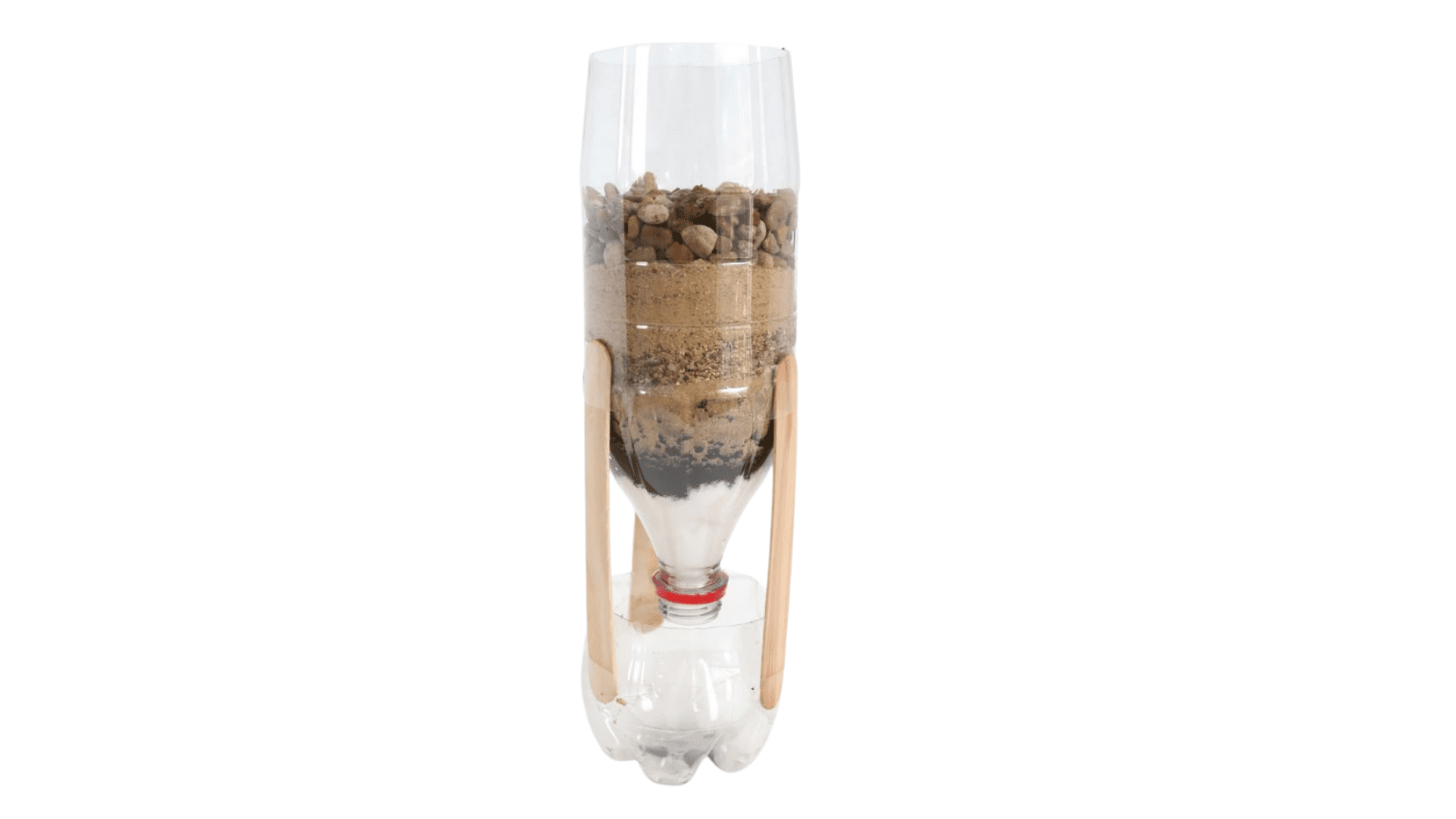
Give students sand, gravel, and cotton, then challenge them to make dirty water cleaner. They see how different materials filter out particles. It’s a simple experiment that sparks conversations about clean water around the world.
- Time: 25–35 minutes
- Materials: Plastic bottles, sand, gravel, cotton, dirty water
- Difficulty: Medium
8. Crystal Growing
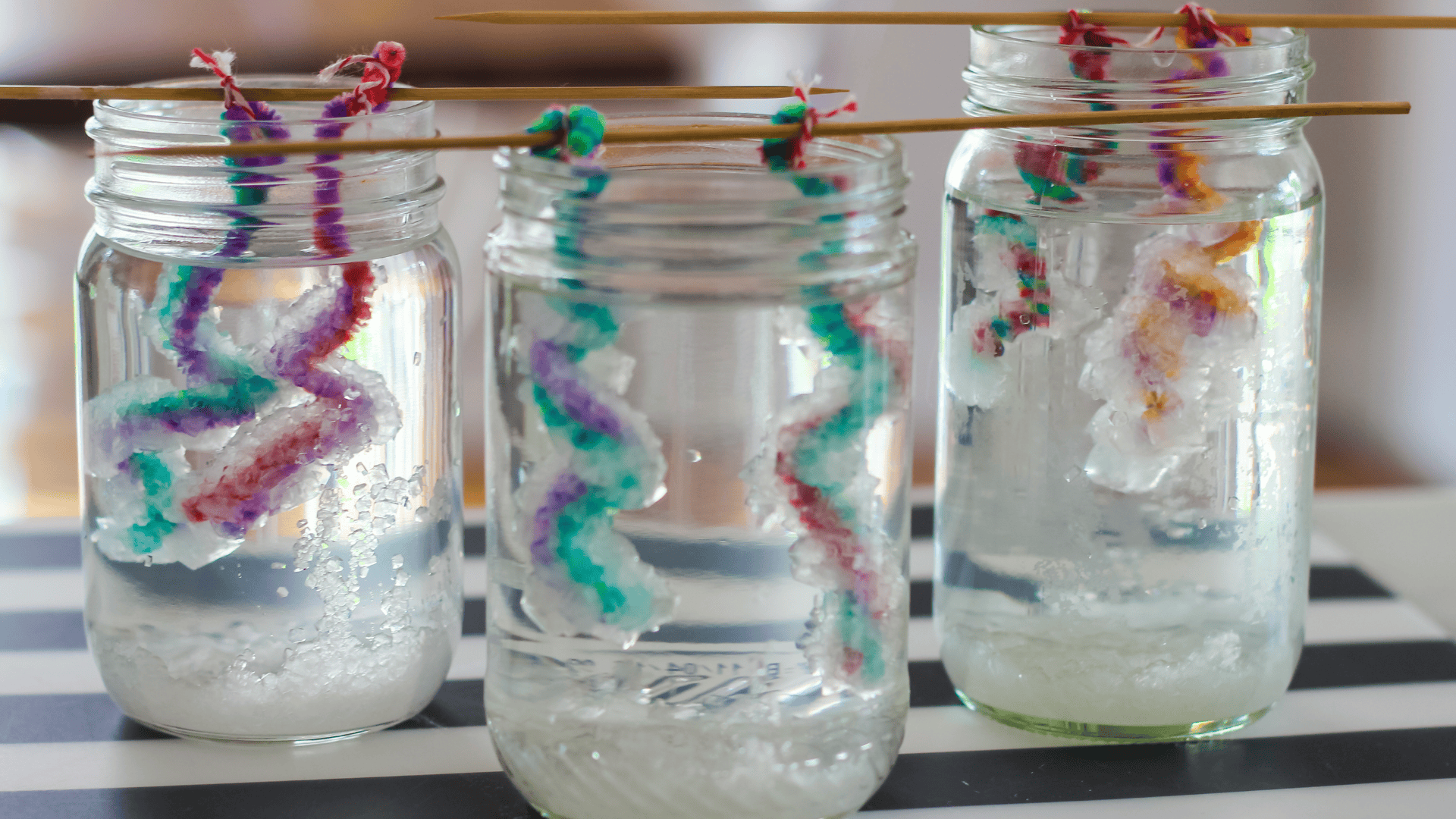
Mix a few ingredients (1/2 cup of magnesium sulfate with 1/2 cup of very hot tap water and food colors of your choice) and let kids watch crystals form over a few days. They’ll see how solutions turn into solid shapes. It’s slow science, but the results feel like magic.
- Time: Setup 15 minutes, crystals grow in 1–3 days
- Materials: Salt or borax or magnesium sulfate, hot water, jars, string, sticks
- Difficulty: Easy
9. Edible DNA Models
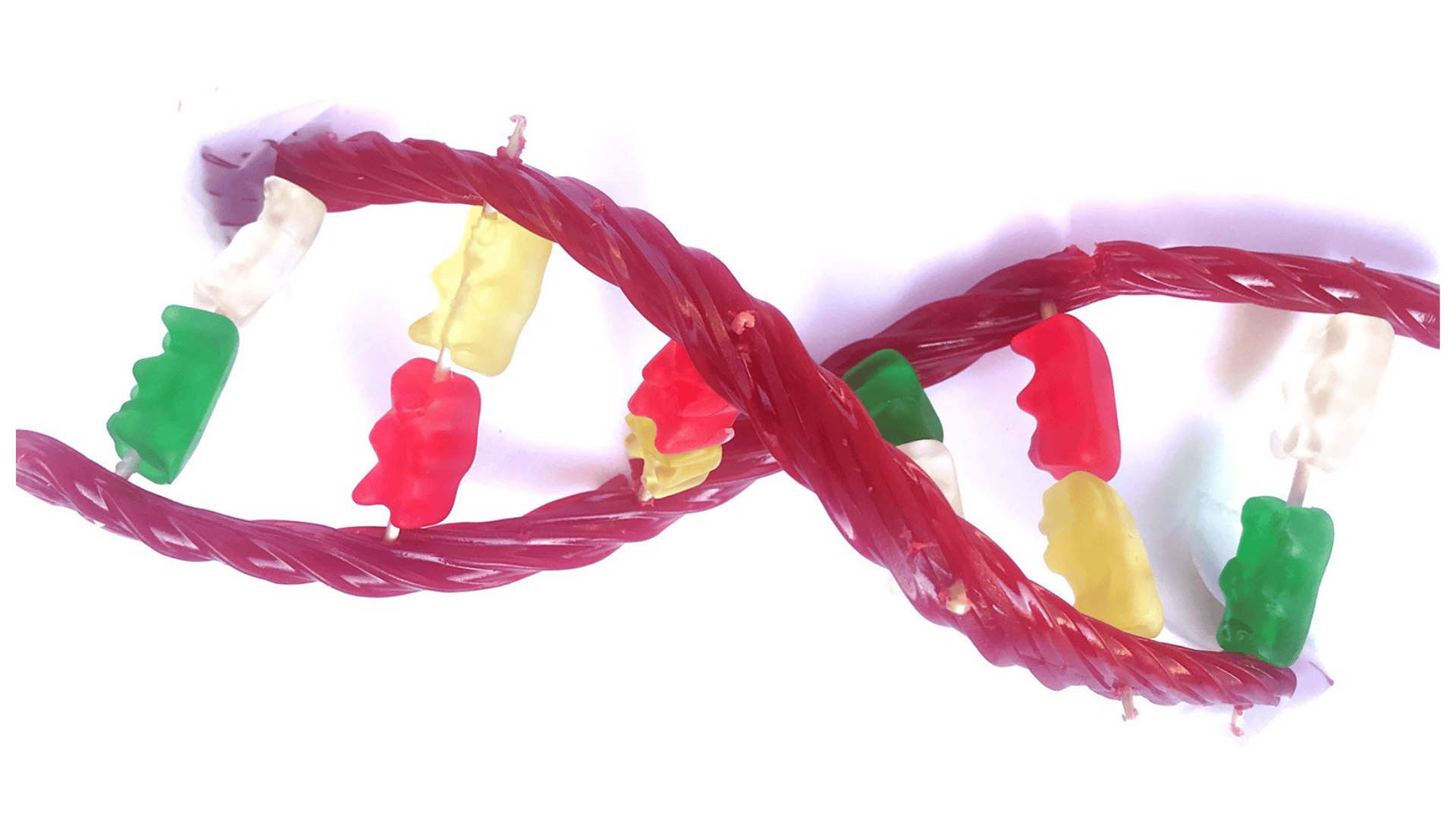
Use candy or fruit to build DNA strands. Each piece stands for a base or sugar. Kids can “eat their experiment” while learning how genetics works. It makes an abstract concept easy to picture.
- Time: 20–30 minutes
- Materials: Licorice, marshmallows, gumdrops, toothpicks
- Difficulty: Easy
10. Magnet Mazes
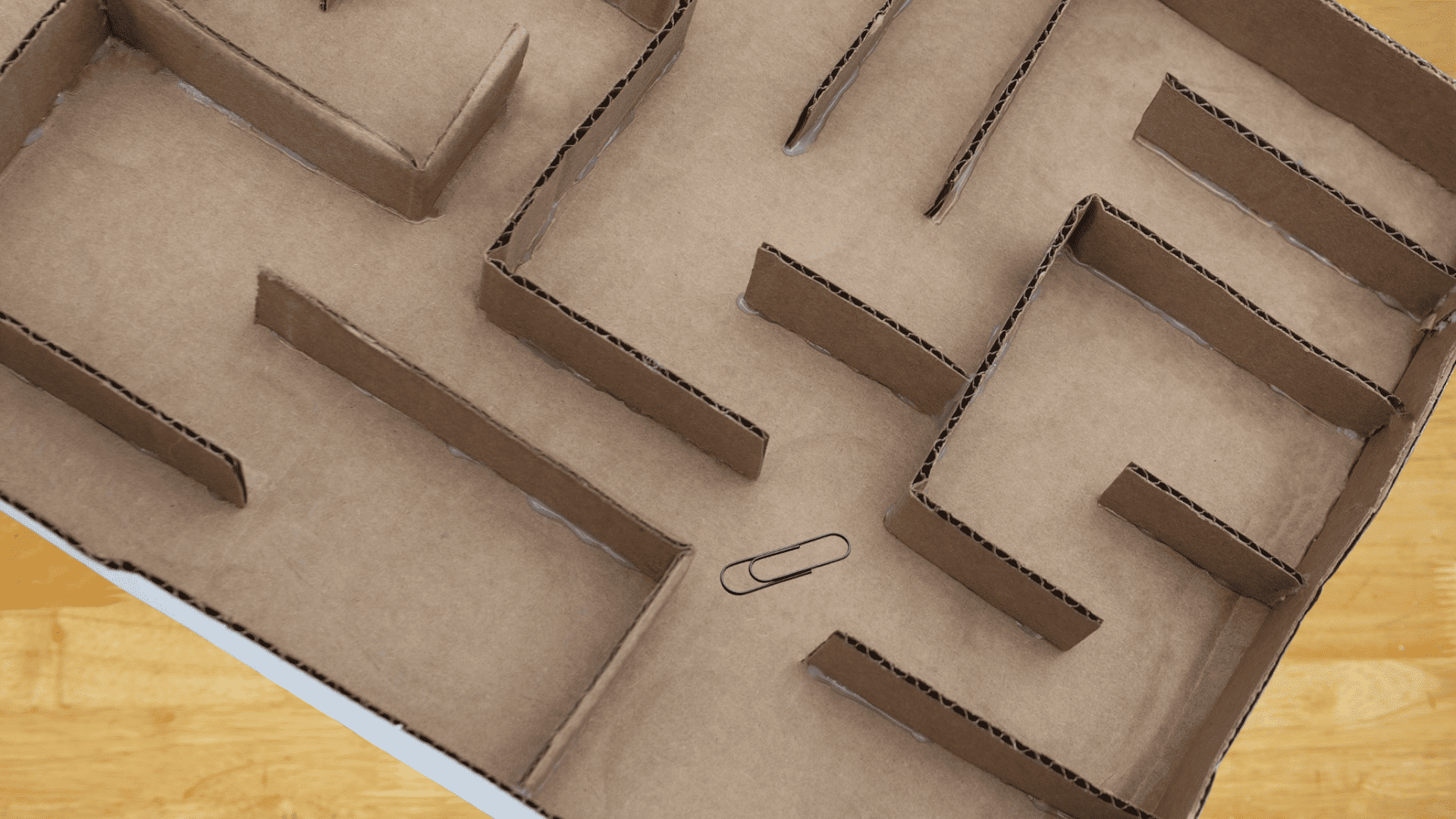
Students design a maze on cardboard and move a paperclip through it using a magnet underneath. It’s hands-on and helps them see how magnetic fields can push and pull objects without touching.
- Time: 20–25 minutes
- Materials: Cardboard, paperclips, markers, magnets
- Difficulty: Easy
Engineering & Design Projects
These challenges push kids to design, test, and rebuild. They’re all about teamwork, problem-solving, and finding out that the first try rarely works.
11. Rube Goldberg Machines
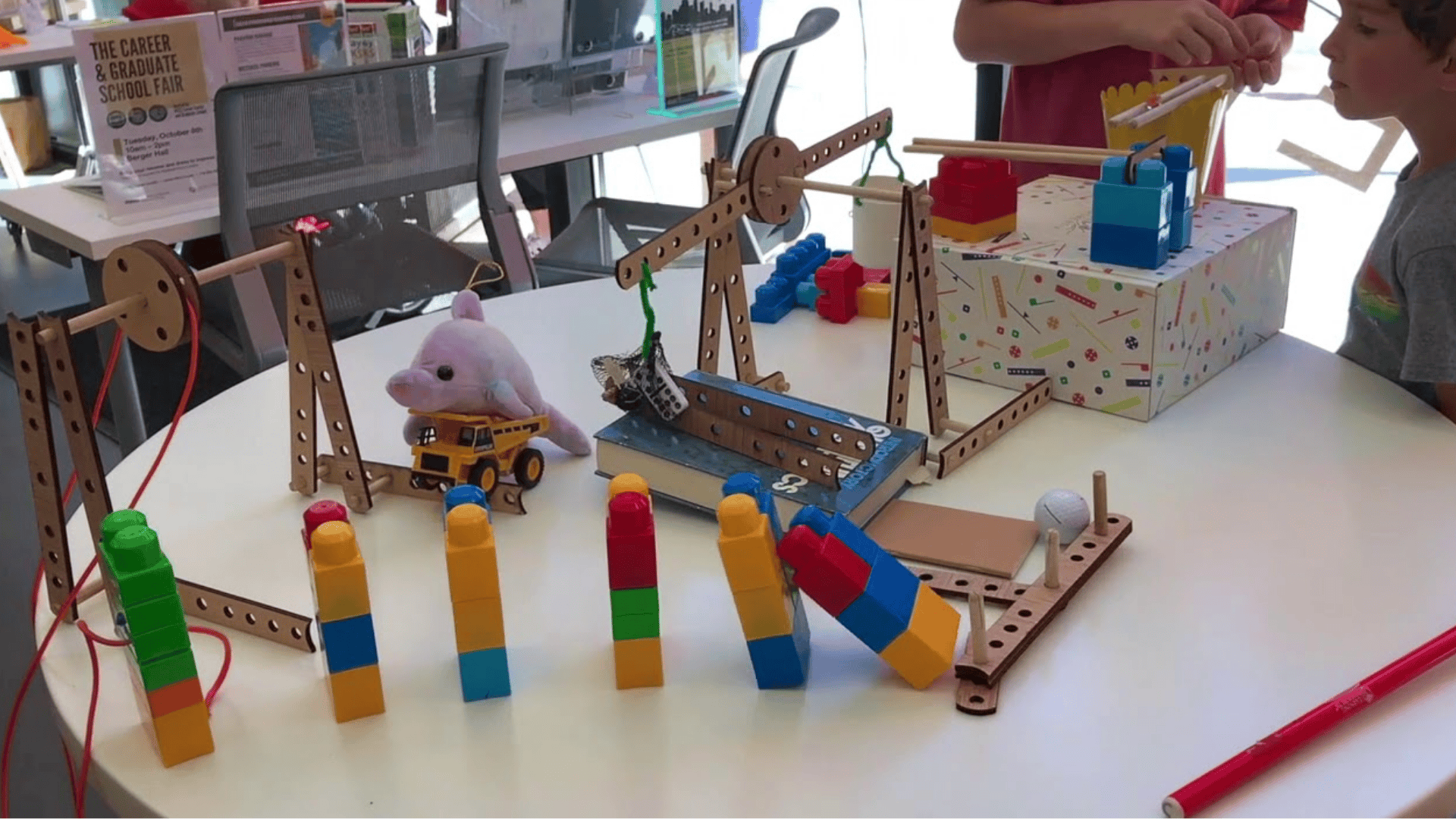
Students build a chain reaction machine to complete a simple task, like popping a balloon or ringing a bell. It’s messy, creative, and a perfect way to mix fun with lessons about cause and effect.
- Time: 45–60 minutes
- Materials: Dominoes, marbles, cardboard tubes, tape, string, recycled items
- Difficulty: Hard
12. Balloon/Wind-Powered Cars
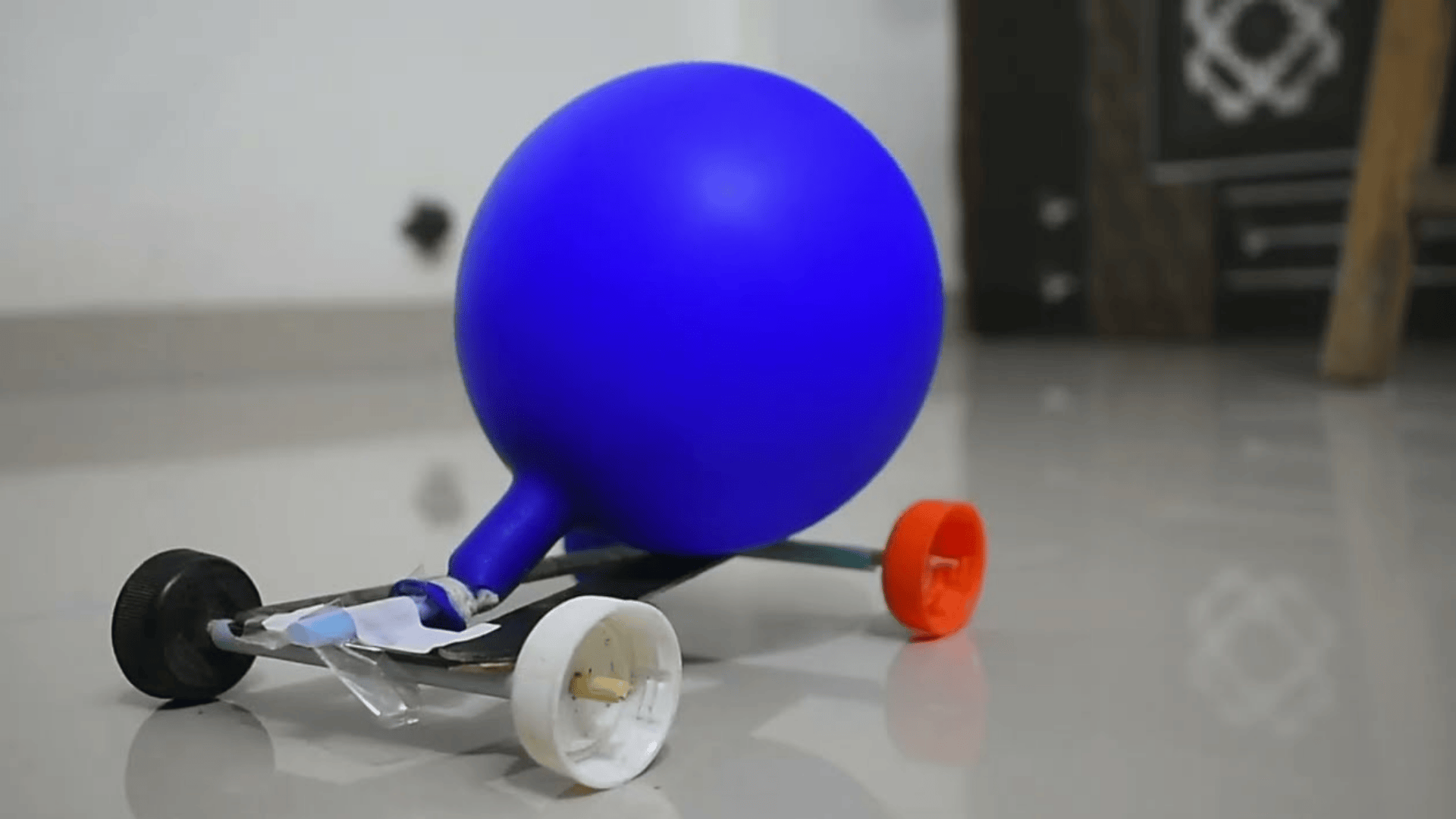
With straws, wheels, and a balloon, kids make cars that move using air. They’ll see how energy transfers and how design choices affect speed and distance. A fun mix of physics and creativity.
- Time: 25–35 minutes
- Materials: Balloons, straws, cardboard, wheels (or bottle caps), tape
- Difficulty: Medium
13. Rubber Band Cars
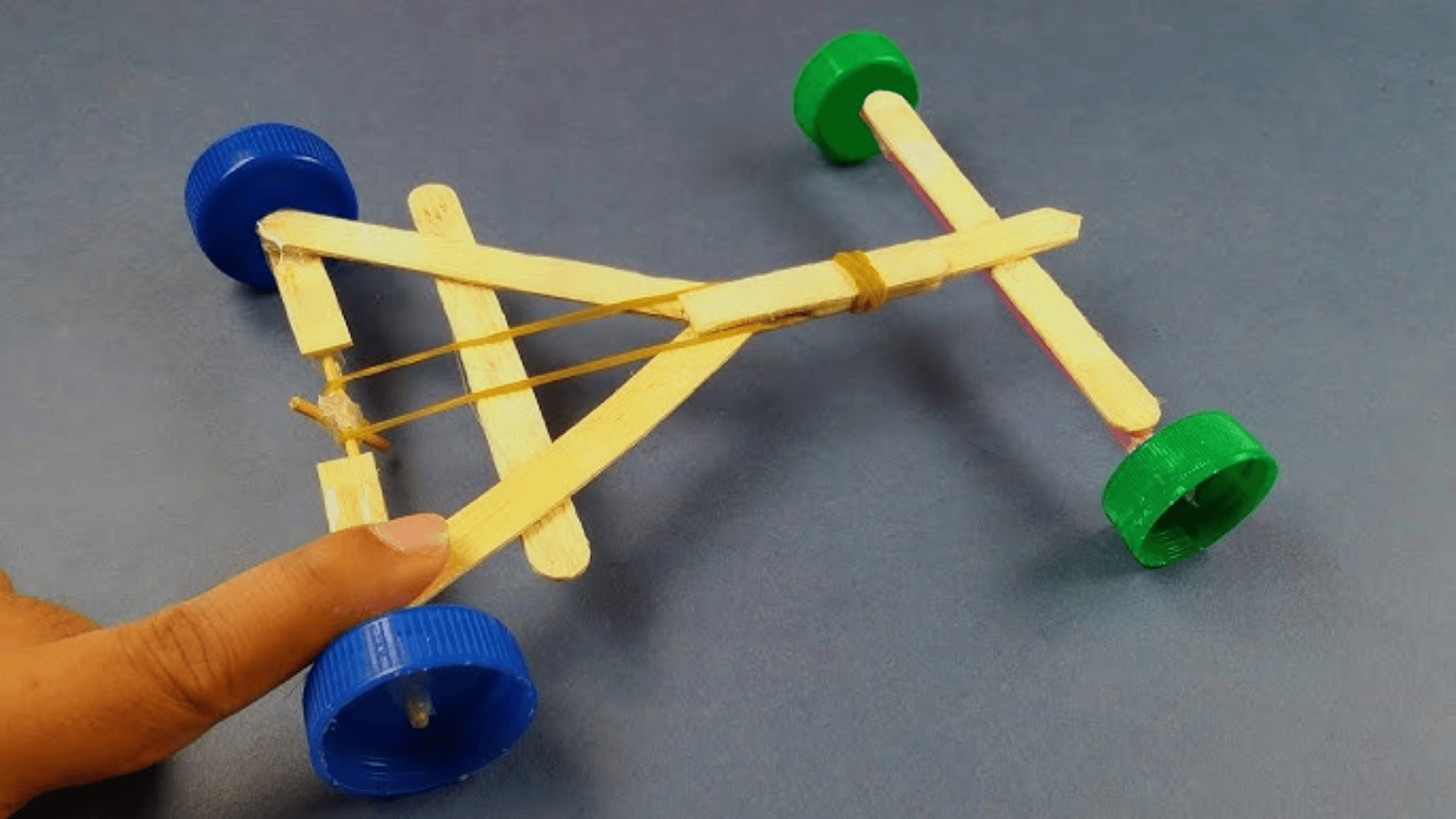
Instead of air, students power their cars with rubber bands. They wind them up, release, and watch the cars roll. This demonstrates stored energy in action and allows kids to test designs for speed and strength.
- Time: 30–40 minutes
- Materials: Rubber bands, cardboard, skewers, wheels, tape
- Difficulty: Medium
14. Spaghetti Tower Competition
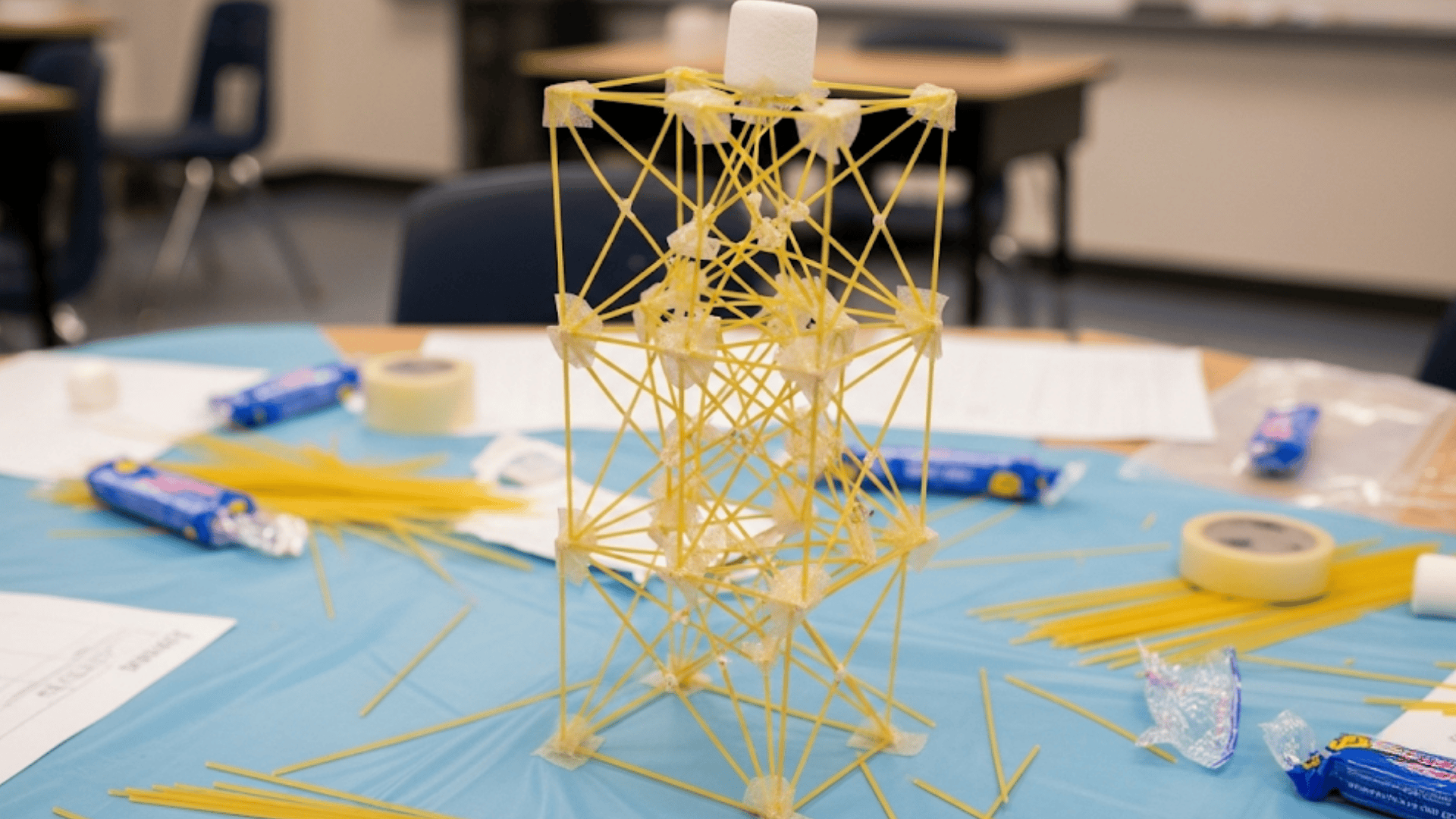
Teams get a handful of spaghetti and tape to build the tallest freestanding tower. Add a marshmallow on top for a twist. It’s a great way to teach balance, strength, and working under time limits.
- Time: 20–30 minutes
- Materials: Dry spaghetti, tape, marshmallows
- Difficulty: Easy
15. Candy Gears Challenge
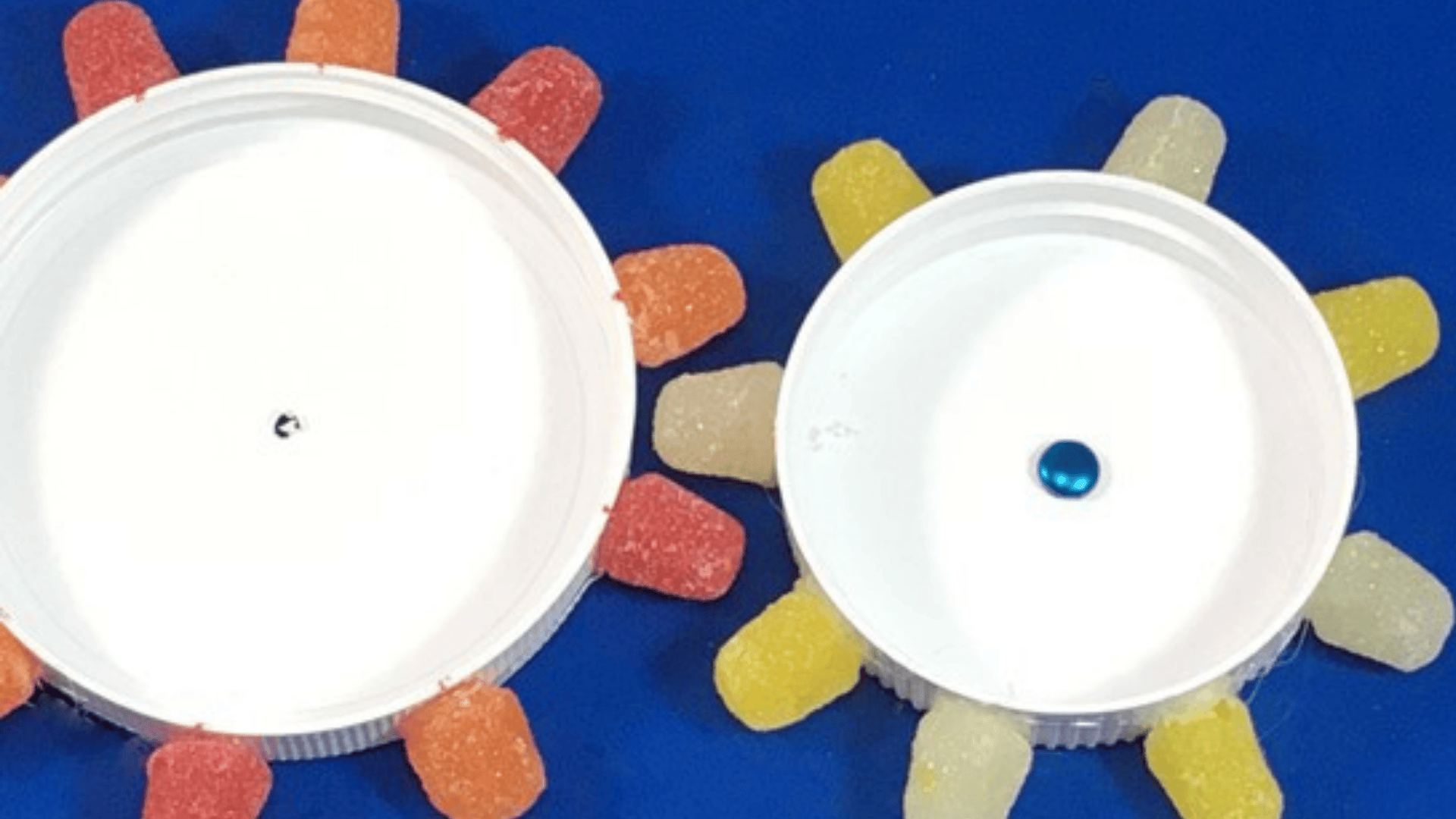
Students use candy pieces (like Lifesavers or mints) as gears to move objects. It helps them understand how gears connect and transfer motion. Plus, they get a sweet reward after.
- Time: 25–35 minutes
- Materials: Hard candy, skewers, cardboard, tape
- Difficulty: Medium
These projects show students that engineering is about trying, failing, and trying again. They’ll walk away with enhanced teamwork skills and a deeper understanding of how design influences results.
Technology & Modern STEM (Accessible Options)
Not every tech project needs fancy tools. These activities give kids a taste of coding, robotics, and energy in ways that are simple and doable.
16. Unplugged Coding with Paper
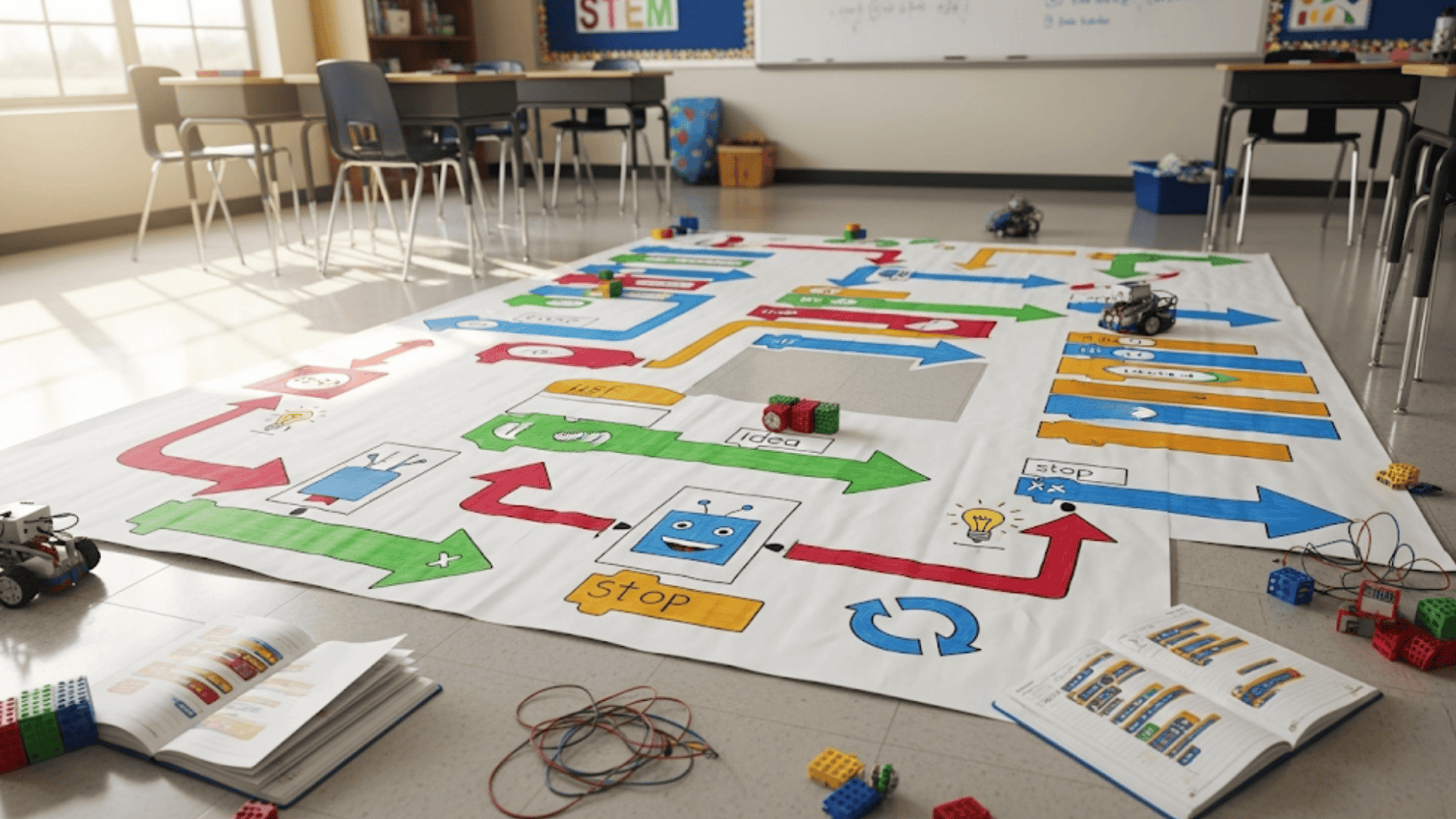
Lay out arrows or symbols on paper and have students “code” a path for a classmate or object. It’s a screen-free way to show how algorithms work step by step.
- Time: 15–20 minutes
- Materials: Paper, markers, floor space
- Difficulty: Easy
17. Scratch Coding Challenges
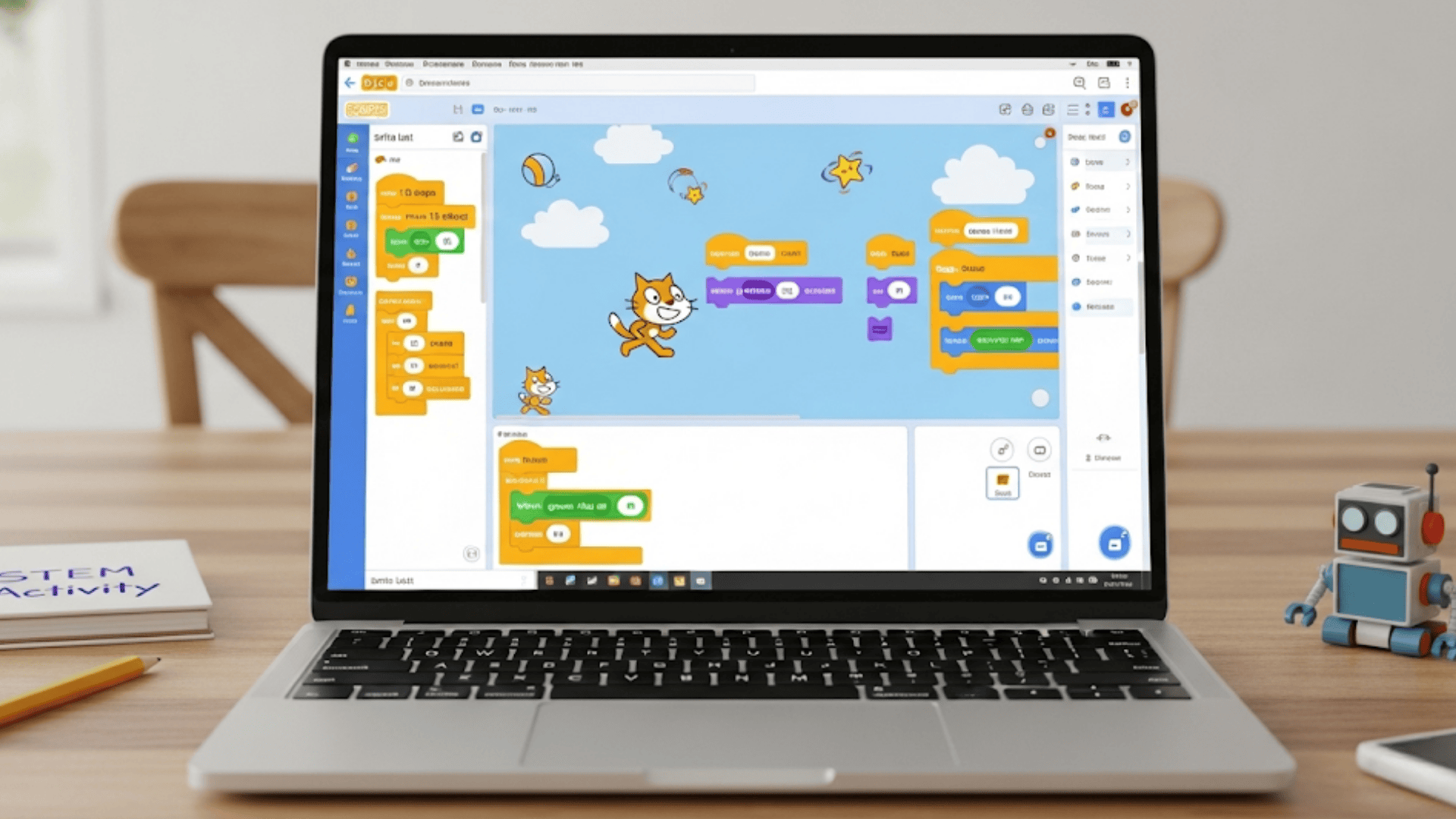
Scratch is a free online tool that makes coding visual and fun. Students can animate characters, design games, or build simple stories. It’s a stress-free entry into programming.
- Time: 30–45 minutes
- Materials: Computers or tablets with internet access
- Difficulty: Medium
18. Simple Circuits with Batteries & Bulbs
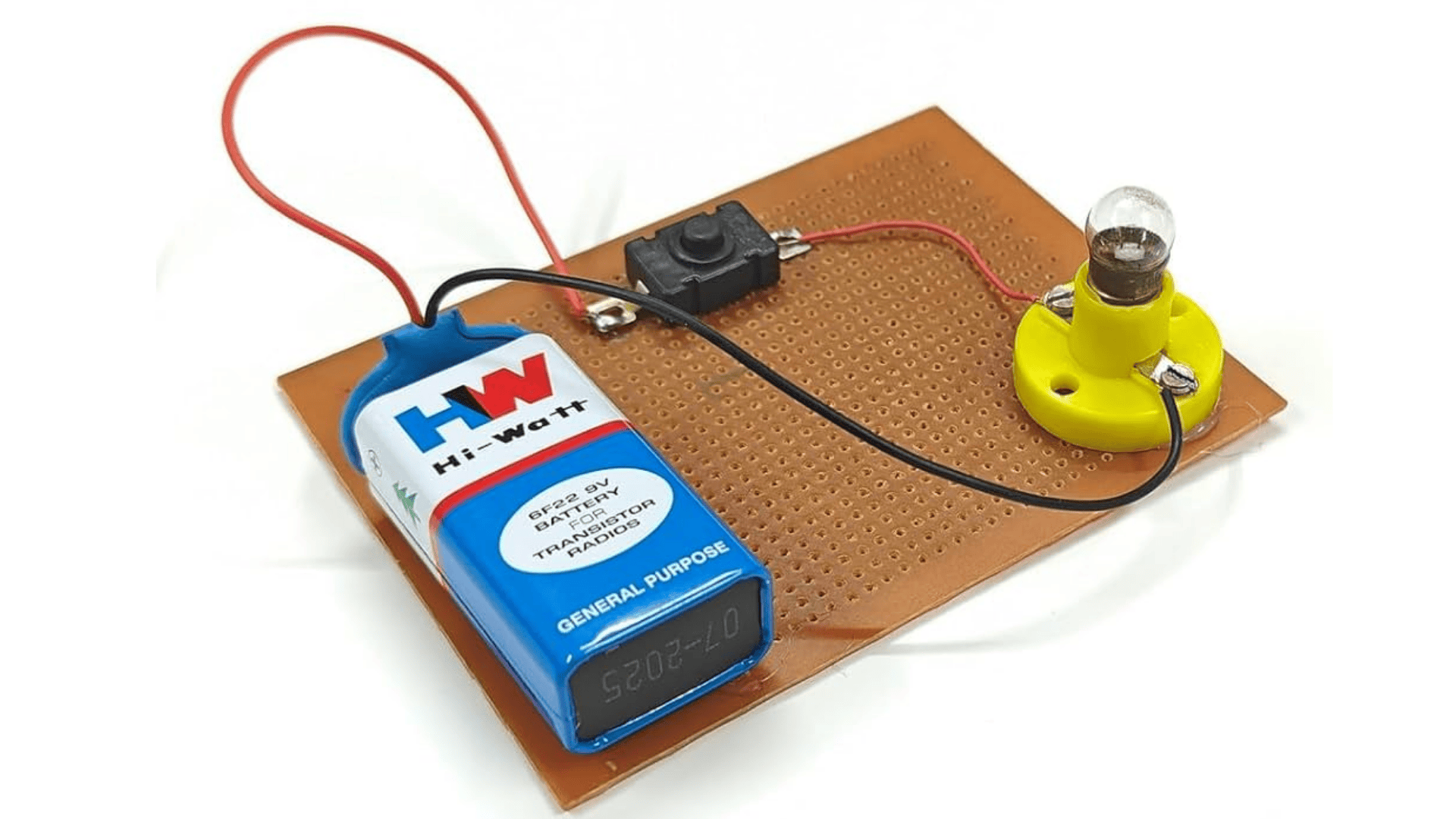
Students connect batteries, wires, and bulbs to make simple circuits. They’ll see firsthand how electricity flows and what happens when a circuit is open or closed.
- Time: 20–30 minutes
- Materials: Batteries, bulbs, wires, tape
- Difficulty: Easy
19. Cardboard Robotic Hand
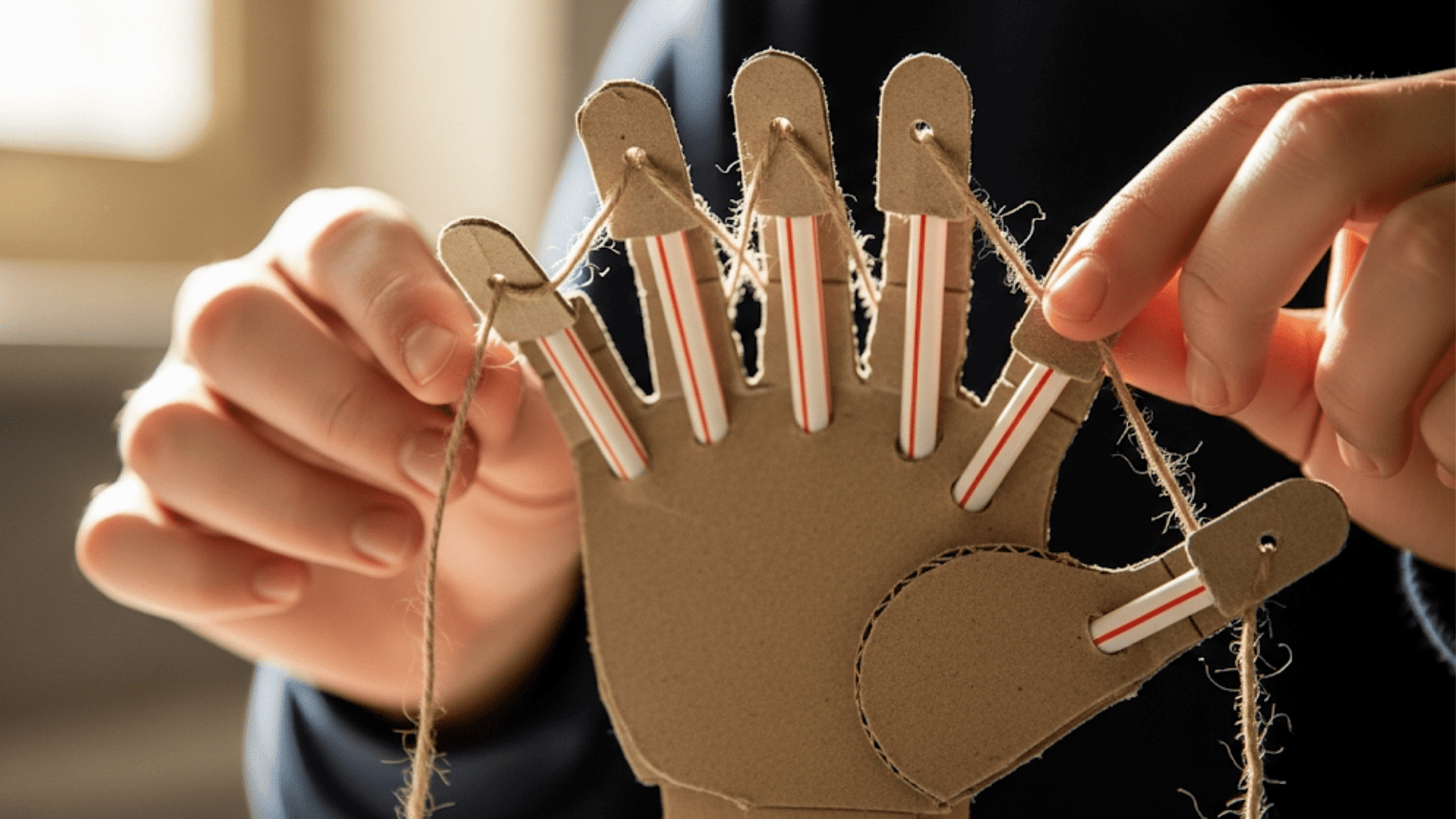
Using straws or syringes, kids build a hand that opens and closes. It demonstrates how tendons and muscles function in the human body, connecting engineering to biology.
- Time: 35–45 minutes
- Materials: Cardboard, straws or syringes, string, tape
- Difficulty: Medium
20. Mini Renewable Energy Projects
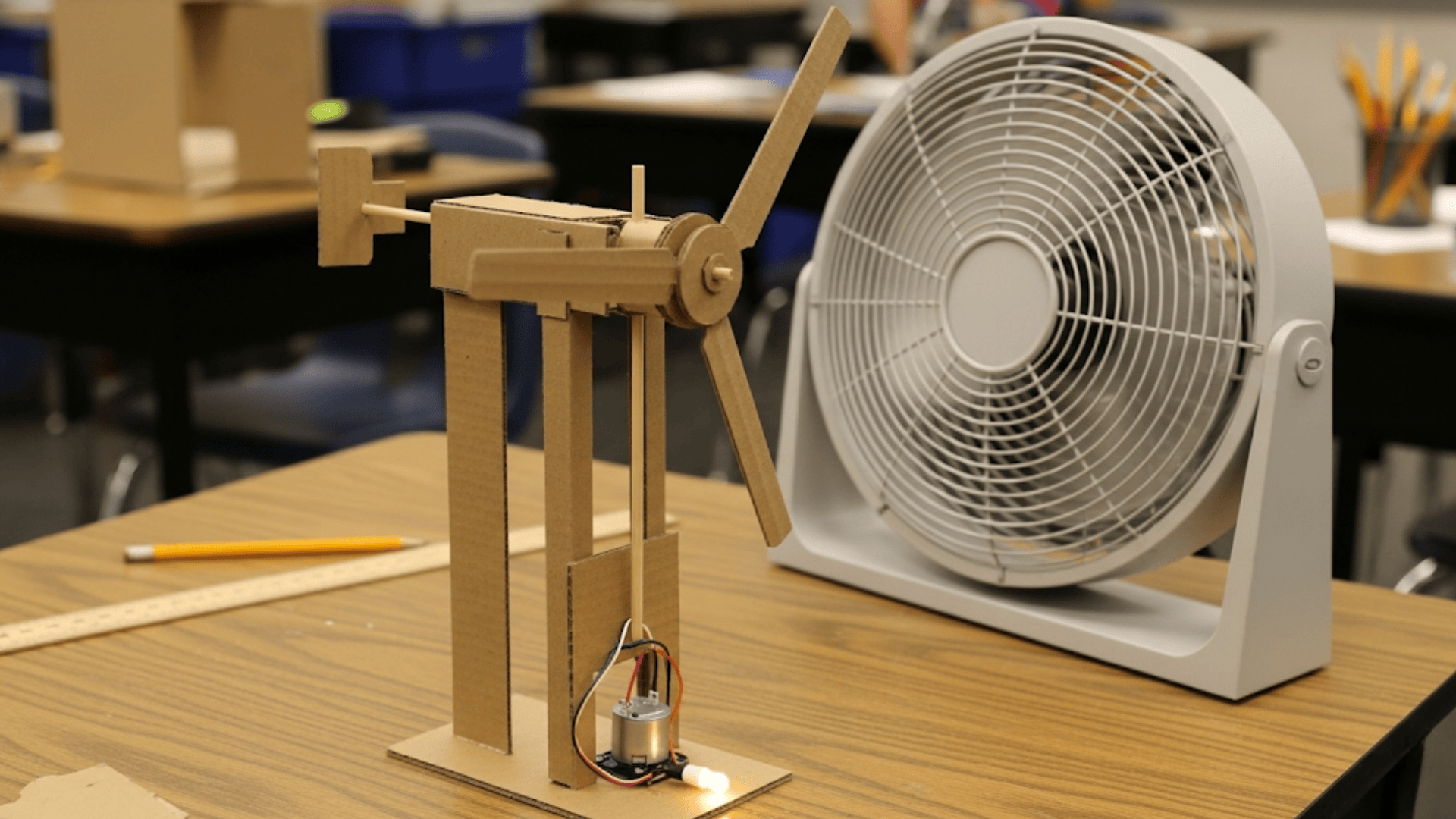
Students design a small wind turbine or test a tiny solar panel. They’ll see how clean energy is produced and talk about why it matters for the future.
- Time: 30–45 minutes
- Materials: Cardboard, small motor, fan, or solar panel kit
- Difficulty: Medium
21. 3D Printing or Drone Obstacle Course (Optional)
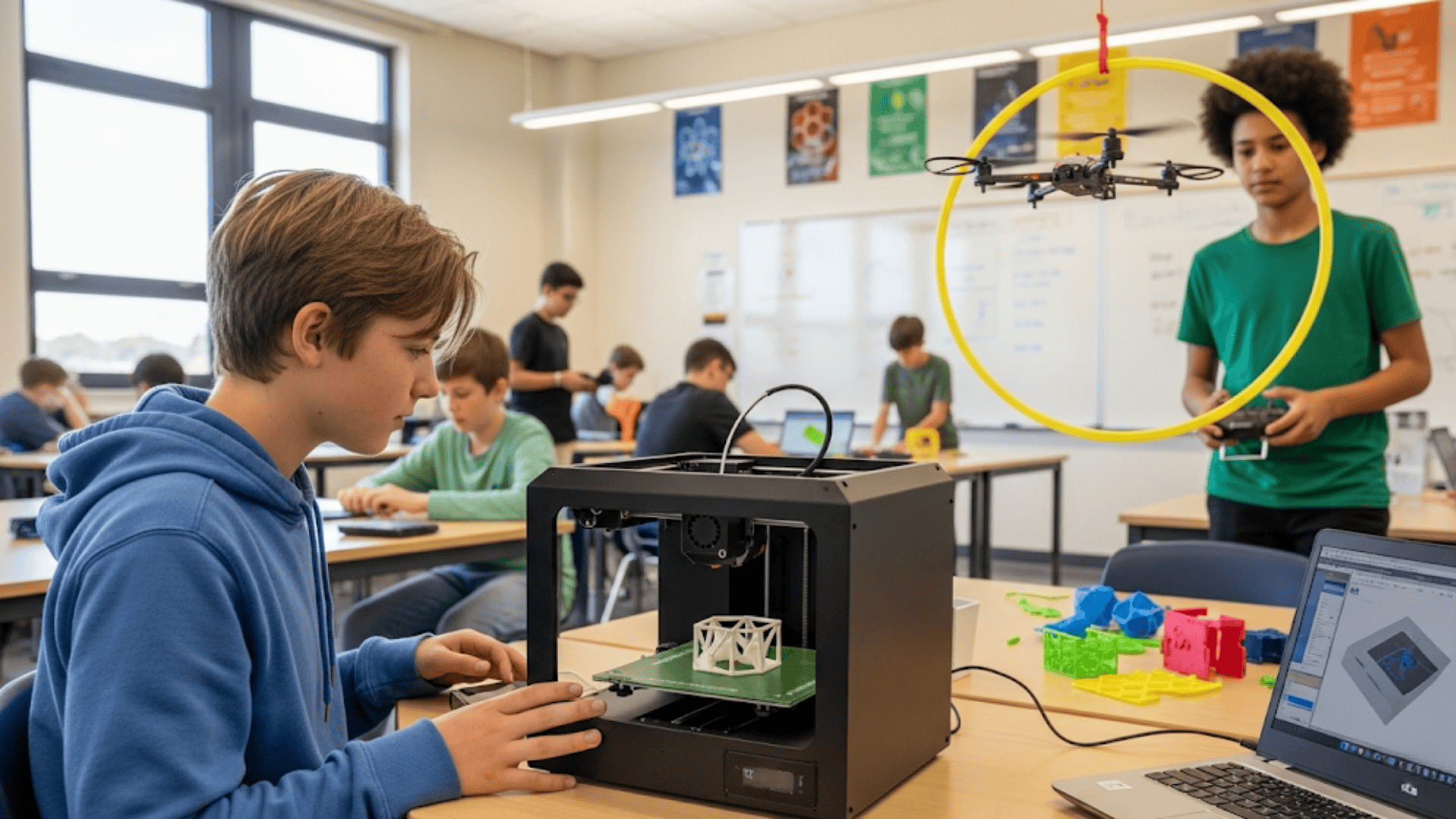
If tech is available, students can try beginner 3D designs or fly mini drones through simple courses. These projects add excitement and connect learning to real-world tech.
- Time: 45–60 minutes
- Materials: 3D printer or mini drones
- Difficulty: Hard
Cross-Curricular Middle School STEM Projects
STEM doesn’t have to stand alone. These projects connect science, math, art, and teamwork, so students see how learning blends together in real life.
22. Design a Mini-Greenhouse
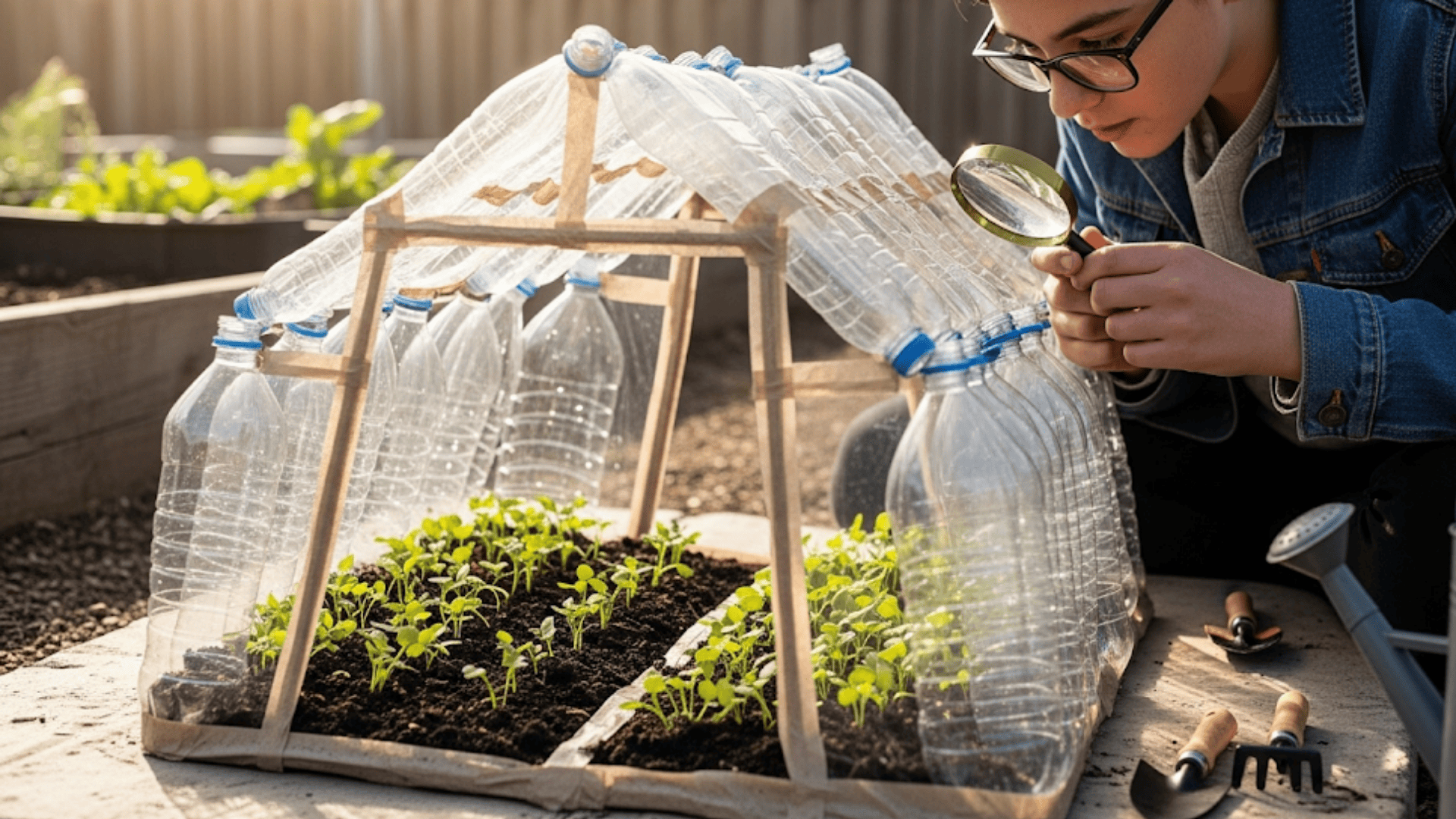
Students build a small greenhouse from plastic bottles or clear containers. They test how it traps heat and helps plants grow. This project links science, engineering, and sustainability in a hands-on way.
- Time: 40–60 minutes (plus plant growth over time)
- Materials: Plastic bottles or clear boxes, soil, seeds, tape
- Difficulty: Medium
23. Budget a School Event

Give students a set budget and ask them to plan an event, like a class party or fundraiser. They’ll practice math by adding costs, teamwork by dividing tasks, and problem-solving by staying within limits.
- Time: 30–40 minutes
- Materials: Paper, calculators, printed “price lists”
- Difficulty: Medium
24. STEM in Art

Students learning patterns, symmetry, and geometry through art projects. They might create tessellations, build 3D paper sculptures, or design artwork using math shapes. It’s a fun way to mix creativity with problem-solving.
- Time: 25–35 minutes
- Materials: Paper, rulers, markers, scissors, glue
- Difficulty: Easy
These projects demonstrate to students that STEM skills are applicable in various contexts, from growing food to planning events to creating art. They make learning feel connected to everyday life.
Overall, these STEM activities give students more than just a fun project. They build problem-solving skills, teamwork, and confidence that carry over into every subject.
Classroom Integration & Tips
STEM works best when students have a clear structure and support. These activities aren’t just about building things; they’re about learning how to think, test, and improve.
- Journaling & Reflection Methods: Encourage students to keep a STEM journal where they sketch designs, note predictions, and reflect on results. This simple habit helps them connect projects to bigger learning goals.
- Group vs. Individual Project Setups: Some challenges, like towers or Rube Goldberg machines, work best in groups. Others, such as circuits or coding, can be done independently. Mixing both gives students practice with teamwork and independent learning.
- Differentiating by Grade or Skill Level: Younger grades do best with shorter, simpler steps. Older students can handle extra twists like time limits or testing multiple designs. This keeps projects engaging for everyone.
- Assessing Student Learning: Keep assessments simple but meaningful. Try rubrics for creativity and teamwork, project presentations, or peer reviews. These methods help students reflect while keeping evaluation stress-free.
With these tips, STEM projects move beyond being just fun; they become meaningful learning experiences that stick with students.
Conclusion
We’ve gone through quick challenges, science experiments, design projects, and tech ideas—each one designed to make STEM fun and doable in middle school.
These STEM activities for middle school help kids build confidence, problem-solving skills, and teamwork, while showing how science and math connect to everyday life.
You don’t need fancy tools, just a few simple supplies and a bit of curiosity. To make it even easier, use the free printables I’ve included- they’ll help you get started right away.
With small steps like these, you can turn STEM into a regular part of learning that students look forward to. Now it’s your turn; pick one activity and try it with your students.











